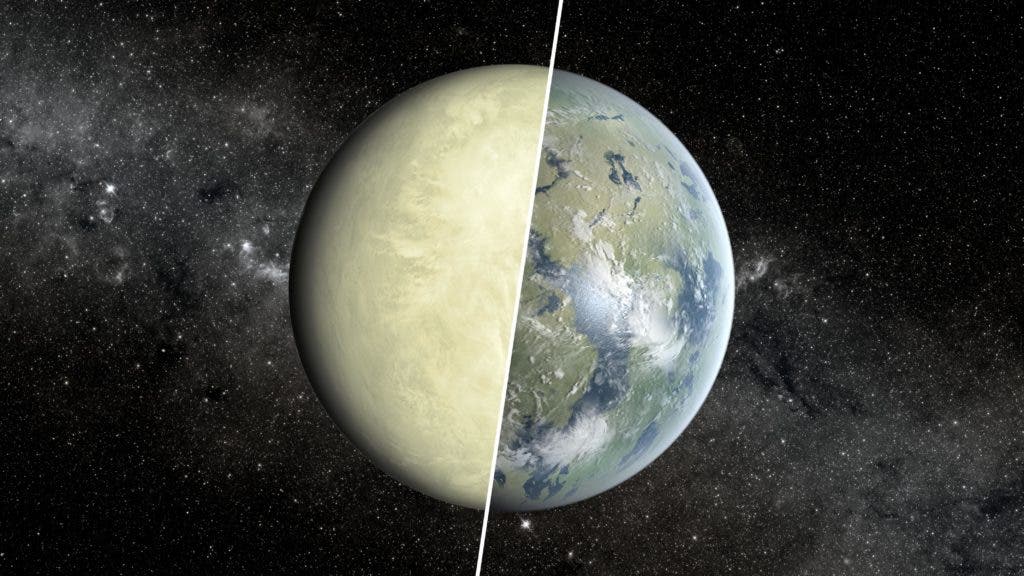Long ago, Venus might have harbored an entire ocean.

Image credits NASA / JPL-Caltech
A team of researchers led by Université de Versailles Saint-Quentin-en-Yvelines (Guyancourt, France) planetary scientist Emmanuel Marcq believe it’s very likely early Venus had an ocean.
Their theory is based on a number of computer simulations the team ran to understand how the molten crust of young rocky planets interacts with their burgeoning atmospheres and incoming energy from parent stars. These simulations showed that if an early-Venus-like planet had carbon dioxide levels similar to those seen today, it would only need about 10% of Earth’s water volume to form a stable planetary ocean. If you tweak some of the planet’s characteristics — like cloud reflectiveness, for example — to get the least ocean-conductive environment possible, you’d still need just 30% of Earth’s water to form a stable ocean.
Whether or not a planet can maintain liquid water on its surface mainly comes down to it keeping within a specific range of temperatures and pressures. Both of these are the result of how much energy a planet gets from its parent star versus how much it can dump back into space — which in turn can be boiled down to the complex interplay between the atmosphere’s chemistry, the reflectivity of its clouds, and other factors such as distance from the star.
Marcq’s team’s findings build on the results of a paper published last year, which found that Venus’ slow rotation speed could have allowed for a continuous, sufficiently-thick cloud cover to form and keep average temperatures around 15° Celsius as recently as 715 million years ago. That’s a very far cry from present Venus’ crisp average of 460° C, but more importantly, it’s cold enough to allow for a shallow ocean to form.
So the fact that Venus could harbor an ocean isn’t that surprising, Marcq says. But it’s still “very much a hotly debated, open question” if Venus did harbor an ocean. The team’s work comes to prop up the theory that it did, as their results suggest it was much more likely for water vapor to condense into an ocean during Venus’ early days than previously believed.
However, their simulations don’t offer any insight into how later changes on Venus would’ve impacted this ocean — if there was an ocean at all. It also doesn’t offer any answers as to how long this grace period lasted on Venus, or where the ocean went afterward to create the decidedly-dry neighbor we have today. So far from settling the debate, the results are likely to fan the flames even further.
But on the plus side, the simulations can help planetary scientists refine their search for habitable planets outside of the solar system by offering a better idea of what conditions in a planet’s atmosphere and on the ground level are likely to make it suitable for life.
The paper “The relative influence of H2O and CO2 on the primitive surface conditions and evolution of rocky planets” has been published in The Journal of Geophysical Research: Planets.



